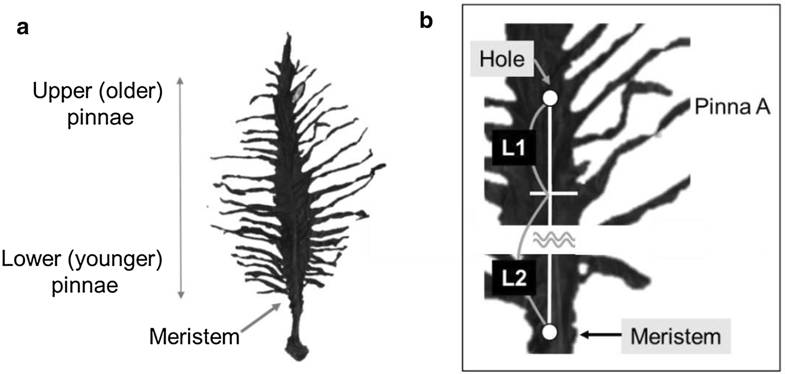Researchers in Japan recently published a study in the Journal of Oceanography on using position-dependent radiocarbon as an indicator of oceanographic conditions during algal growth.
The macroalga Undaria pinnatifida grows in a predictable way, older growth at the top and the new growth is at the bottom (image below)
The researchers hypothesized that the age of the Undaria tissue would correlate with ocean conditions through time. Inorganic carbon ∆14C was tracked in tissues and ambient water through time. The study concluded that inorganic carbon in the Undaria tissues did correlate with oceanic samples through time.
They concluded that this technique “provides a new tool to better understand the role of oceanographic conditions in sustaining coastal ecosystem productivity.”
It will be interesting to see this new approach applied to other species, such as Pterygophora californica, which can live upwards of 15 years.

